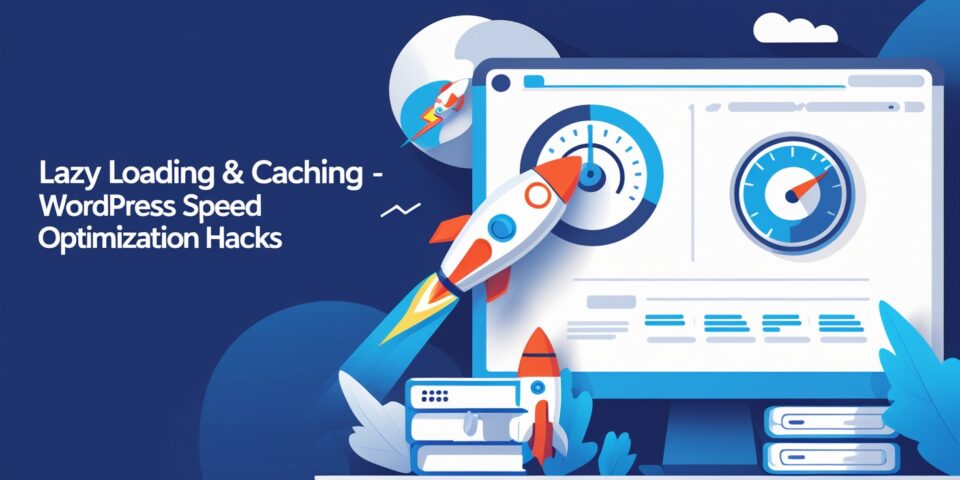Meta Description (Yoast SEO):
Learn how lazy loading and caching can supercharge your WordPress site speed. Step-by-step hacks for faster loading and better Core Web Vitals.
Why Speed Optimization Matters in WordPress
Website speed is no longer optional — it directly affects SEO rankings, bounce rates, and conversions. Google’s Core Web Vitals now factor in performance as a ranking signal, which means your optimization choices play a critical role.
What Is Lazy Loading and Why Use It?
Lazy loading means images, videos, and iframes only load when they are about to enter the visitor’s screen. Instead of loading every media file at once, the browser loads content on-demand, reducing initial load time.
Benefits of Lazy Loading in WordPress:
- Faster initial page load
- Lower bandwidth usage
- Better Core Web Vitals (especially LCP – Largest Contentful Paint)
- Improved user experience on mobile devices
👉 Pro tip: WordPress has built-in lazy loading. You can extend this with plugins like WP Rocket or a3 Lazy Load for more control.
The Power of Caching in WordPress
Caching stores copies of your site’s files so that they load instantly for repeat visitors instead of reloading everything from scratch.
Types of Caching That Work Best in WordPress:
- Browser Caching – Stores CSS, JS, and images in the visitor’s browser.
- Page Caching – Serves a static version of your page instead of running PHP each time.
- Object Caching – Speeds up database queries.
Recommended Plugins:
- LiteSpeed Cache (best for LiteSpeed servers)
- WP Rocket (premium but beginner-friendly)
- W3 Total Cache (advanced customization)
👉 Pro tip: Adding caching can reduce WordPress load times by 30–50%
Combining Lazy Loading + Caching for Faster WordPress Sites
When you use both lazy loading and caching, you get:
- ⚡ Sub-2-second load times
- 📈 Improved Google PageSpeed Insights score
- 🔒 Reduced server load during traffic spikes
- 📱 Faster performance on mobile devices
Step-by-Step Speed Optimization Hacks for WordPress
- Install a caching plugin (LiteSpeed, WP Rocket, or W3 Total Cache).
- Enable image and video lazy loading.
- Compress images before upload (use ShortPixel or TinyPNG).
- Minify and combine CSS/JS within your caching plugin.
- Enable GZIP compression via your server or plugin.
- Use a CDN (Cloudflare, BunnyCDN, or KeyCDN) for global delivery.
- Test results with GTmetrix, Pingdom, or Google PageSpeed Insights.
WordPress + Core Web Vitals: The Perfect Match
When combined with lazy loading and caching, you’ll see improvements in:
- LCP (Largest Contentful Paint)
- FID (First Input Delay)
- CLS (Cumulative Layout Shift)
This results in a faster, smoother experience that Google and your visitors love.
FAQ – Speed Optimization in WordPress
Q1: Does WordPress support lazy loading out of the box?
Yes, it uses native lazy loading, but plugins can enhance it.
Q2: Which caching plugin is best for WordPress?
LiteSpeed Cache or WP Rocket are highly recommended.
Q3: Can I use WordPress with a CDN?
Absolutely — pairing WordPress with a CDN ensures global users experience lightning-fast speeds.
Final Thoughts
Website speed is critical for SEO, user experience, and conversions. WordPress already provides a good foundation, but by adding lazy loading and caching hacks, you can push your website performance to the next level.



